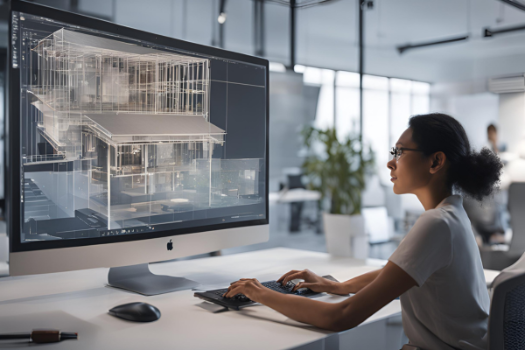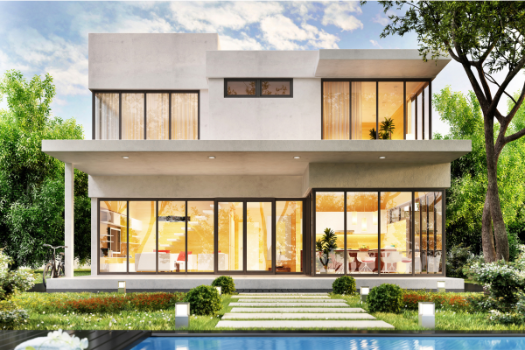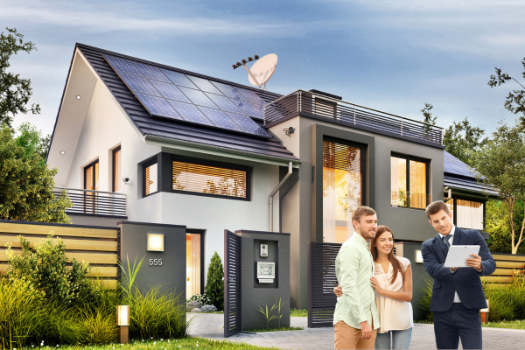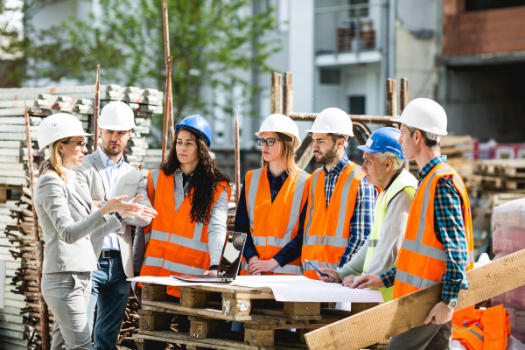.png)
BIM and AI for Smarter and Greener Home Designs
Introduction
Sustainable living is no longer a choice; it’s a necessity. Energy-efficient homes play a vital role in reducing our environmental footprint and tackling climate change. Homeowners and builders alike are looking for smarter ways to design and construct eco-friendly spaces.
This is where Building Information Modeling (BIM) and Artificial Intelligence (AI) come in. These technologies are changing how the construction industry operates. BIM creates detailed digital models of buildings, helping teams plan and collaborate more effectively. AI adds intelligence by analyzing data, predicting outcomes, and optimizing designs for better results.
Together, BIM and AI are making home design smarter and greener. They enable energy-efficient systems, eco-friendly materials, and waste reduction. This synergy is paving the way for a future where sustainable homes are not just possible—they’re the standard.
Understanding BIM and AI in Construction
Building Information Modeling (BIM) is a digital representation of a building’s physical and functional details. It allows architects, engineers, and builders to create detailed 3D models that contain every aspect of a project, from materials to energy systems. BIM promotes collaboration by giving all stakeholders access to the same accurate data throughout a project’s lifecycle.

Artificial Intelligence (AI) is the ability of machines to mimic human intelligence. AI can learn, analyze data, and solve problems. In construction, AI predicts outcomes, identifies risks, and optimizes designs. It works by processing large amounts of information quickly, delivering insights that humans might miss.
When BIM and AI work together, they transform construction projects. BIM provides the foundation with detailed models, while AI enhances it with advanced analysis and predictions. This combination improves decision-making, boosts efficiency, and ensures smarter, greener, and more cost-effective construction outcomes.
Benefits of Integrating BIM and AI in Home Design
BIM and AI work together to improve home design in many ways. One key benefit is energy efficiency. AI analyzes data from BIM to identify the best building orientation, insulation, and systems for reducing energy use. This means homes can be designed to stay cooler in the summer, warmer in the winter, and use less energy overall.

Another significant advantage is improved safety. AI leverages BIM data to predict potential safety hazards during the construction process. By simulating scenarios and identifying weak points in the design, builders can prevent issues like structural instability or unsafe working conditions. This proactive approach ensures a safer building process and results in a more secure home.
Cost reduction is another benefit. AI uses predictive analytics to identify potential problems early in the design phase. Builders can address issues before they happen, saving time and money. For instance, AI can suggest cost-effective materials or highlight areas where delays may occur.
BIM and AI also enhance design flexibility. AI-driven generative design allows architects to create and test multiple scenarios quickly. BIM provides the data, and AI processes it to suggest creative, efficient options. This combination enables innovative, functional homes tailored to specific needs.
The Impact of BIM and AI on Sustainability
BIM and AI are revolutionizing sustainable building design by promoting energy efficiency and encouraging the use of eco-friendly materials. BIM enables architects and engineers to model and simulate energy performance, helping identify areas for improvement before construction begins. This ensures optimal building orientation, insulation, and HVAC design, leading to reduced energy consumption.

AI enhances material selection by analyzing environmental impacts and lifecycle costs. It evaluates options like recycled steel, bamboo, and low-VOC paints, recommending materials with lower carbon footprints. These technologies also integrate lifecycle assessments, ensuring materials perform sustainably from construction to demolition.
In addition to material selection, BIM’s clash detection and AI’s predictive analytics reduce waste by optimizing resource use. For instance, AI can calculate precise material quantities, minimizing over-ordering and construction waste. Together, BIM and AI enable the creation of energy-efficient, eco-friendly buildings while reducing environmental impact.
By adopting these technologies, the construction industry can achieve greener designs and contribute to a more sustainable future.
Case Studies of BIM and AI in Sustainable Home Projects
One example of BIM and AI integration is a residential project that achieved remarkable energy savings. Using BIM, the design team created a detailed model of the home’s structure and energy systems. AI analyzed this data to optimize insulation, window placement, and HVAC performance. The result was a home that consumed 30% less energy than a traditional design. The process also identified renewable energy options, like solar panels, which further reduced environmental impact.

Another project showcased cost reduction and design innovation. By combining BIM’s 3D modeling with AI’s predictive analytics, the architects explored multiple design options. AI suggested material alternatives and construction methods that cut costs by 20% without sacrificing quality. BIM helped visualize these ideas, ensuring the home remained both functional and aesthetically pleasing. This approach allowed the team to deliver a high-quality home on a reduced budget.
These case studies highlight the practical benefits of using BIM and AI. Energy efficiency and cost savings were achieved while improving design quality. However, challenges like requiring skilled professionals and managing large datasets were evident. Despite this, the success of these projects demonstrates that the synergy of BIM and AI can redefine how homes are designed and built.
Challenges and Considerations
Accurate data is the backbone of BIM and AI. Poor-quality data can lead to errors in designs, cost estimates, and project timelines. Ensuring precise data input and having robust data management practices are essential for reliable results. This includes regular updates and proper organization of the data used throughout the project.
Another challenge is the need for skilled professionals. Using BIM and AI tools effectively requires specialized training. Many construction teams need to upskill to fully leverage these technologies. Training programs are vital to help professionals adapt and unlock the full potential of BIM and AI in their projects.

Integration complexity is also a hurdle. Combining BIM and AI systems can be technically demanding. It requires careful planning to ensure these tools work seamlessly together. Strategic implementation and testing are critical to overcoming this challenge and achieving successful outcomes.
Conclusion: Shaping the Future
BIM and AI are set to redefine sustainable home design even further. Emerging advancements, such as AI-powered circular design and enhanced real-time energy modeling, promise smarter, greener, and more efficient homes. As these technologies continue to evolve, their adoption is steadily growing in the construction industry. Builders and designers are recognizing their potential to streamline processes and deliver eco-friendly results, paving the way for widespread implementation.
The benefits of integrating BIM and AI are clear. From energy efficiency to cost reduction and enhanced design flexibility, these tools are transforming how homes are planned and built. Industry professionals must embrace these innovations to stay ahead and contribute to a more sustainable future. By leveraging BIM and AI, we can create homes that are not only smarter but also kinder to the planet—redefining the way we live for generations to come.